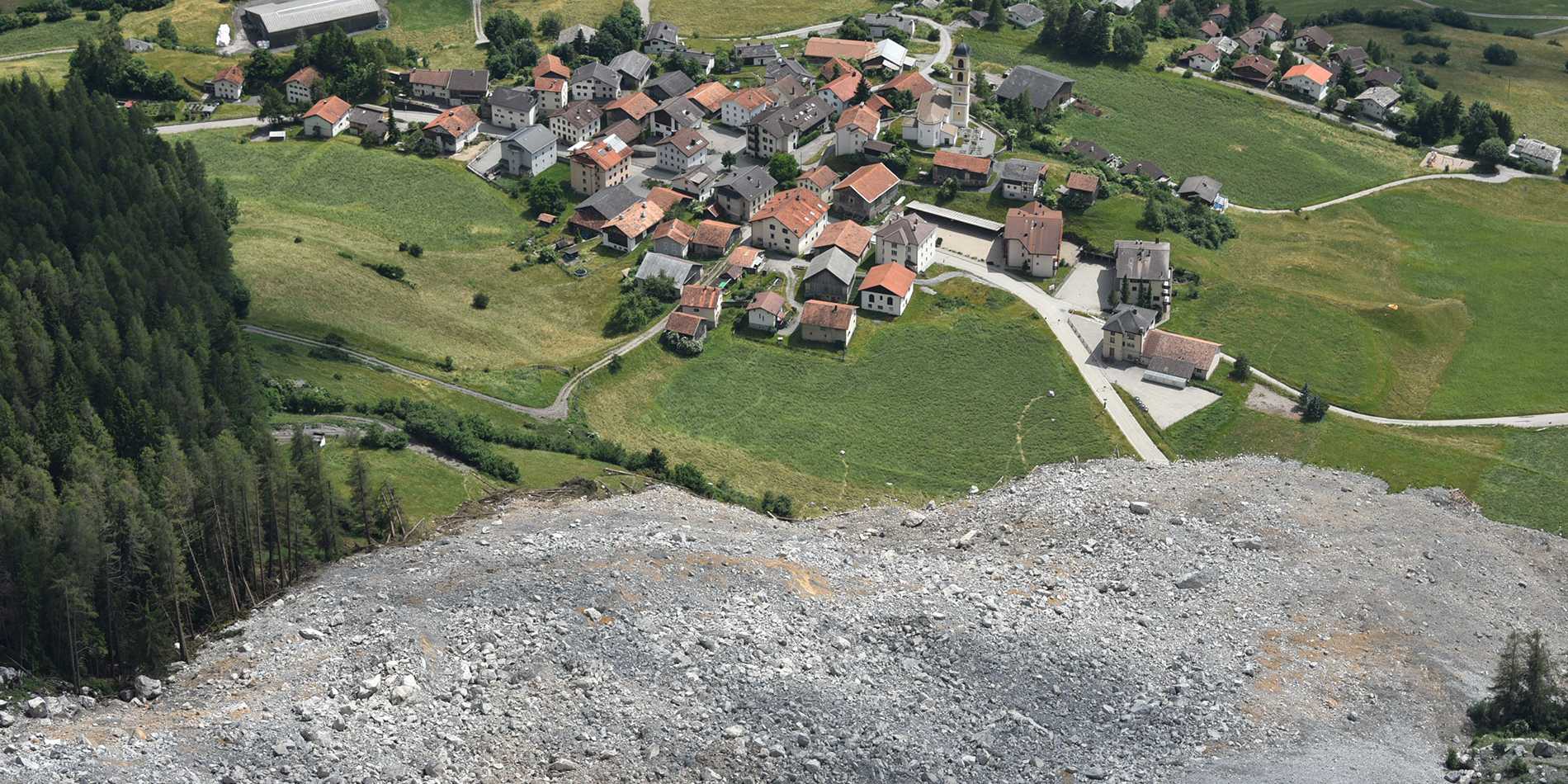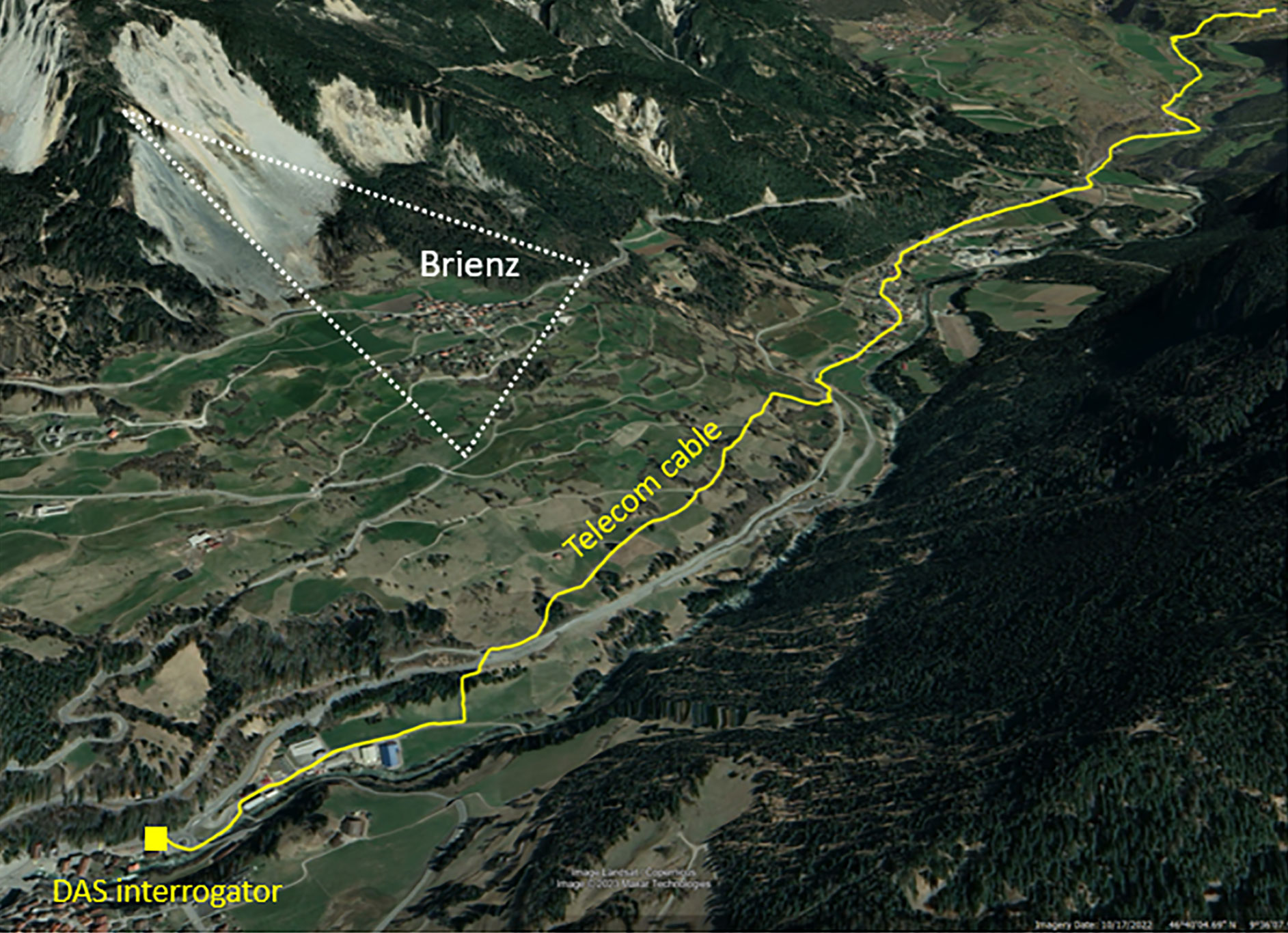Fiber-optic recording of the Brienz rockslide
The rockslide that occured during the night from 15 to 16 June 2023 above the village of Brienz was one of the largest in the Swiss Alps in recent years, displacing more than 1 million cubic meters of material.

While it was too dark to see it, the event was recorded with a FEBUS Optics Distributed Acoustic Sensing (DAS) system interrogating a 10km long telecom fiber buried alongside the road and railway in the valley below Brienz. With the equivalent of 2500 seismic sensors collecting the ground strain fluctuations 200 times per second, DAS provides a unique and apparently rich dataset covering the period from 16 May to 30 June.
A unique dataset: The thin streaks are cars driving along the road. The rockslide signals are most prominent between 1 - 3 km distance along the cable. This work is done in collaboration with Fabian Walter, Andreas Fichtner and Johannes Aichele. Access to the fiber-optic telecom cable was provided by Swisscom. The DAS interrogator was a FEBUS A1-R.
Such a continuous recording will enable the ETH team to investigate the presence of seismic precursors, the nature of the event and globally to study the ground deformation at very high spatiotemporal resolution. Though the detailed analysis still needs to be done, the data already reveal the occurrence of numerous local signals that took place over several hours prior the major event, further confirming the DAS capability to monitor natural hazards (e.g., avalanches, landslides, and earthquakes) and potentially enabling to issue early warnings to the affected populations by taking advantage of existing telecom infrastructures.
About the author
Pascal Edme is a senior scientist leading optic-fiber sensing activities in various groups at the Department of Earth Sciences at ETH Zurich (Seismology and Wave Physics, Exploration and Environmental Geophysics, Swiss Seismological Service groups, Bedretto Underground Laboratory for Geosciences and Geoenergies).
Pascal’s main research focus is on the development of innovative concepts and technologies potentially benefiting a wide range of applications (e.g. exploration, geothermal, near-surface characteriation and imaging, natural hazard monitoring, seismology).

